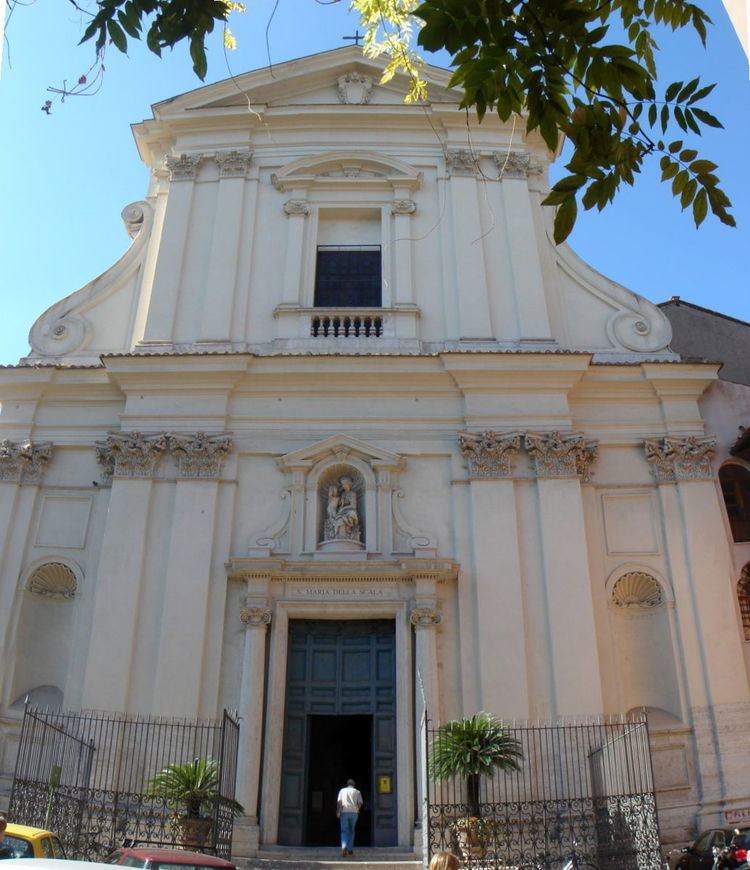Opened 1610 | Phone +39 06 580 6233 | |
 | ||
Similar San Crisogono - Rome, Santi Domenico e Sisto, Santa Maria in Campitelli, San Francesco a Ripa, San Bernardo alle Terme | ||
Santa maria della scala siena italy
Santa Maria della Scala (Italian: Holy Mary of the Staircase) is a titular church in Rome, Italy, located in the Trastevere rione.
Contents
Cardinal Ernest Simoni will take possession of the titular church on February 11, 2017.
Rom chiesa santa maria della scala
History
The church was built between 1593 and 1610 to honor a miraculous icon of the Madonna. Tradition holds that the icon, when placed on the landing of a staircase of a neighboring house of a mother who prayed before it, had cured her deformed child. Consecrated to Mary, mother of Jesus, it enshrines that icon in the north transept, alongside a baroque statue of St John of the Cross. It was sited adjacent to a monastery famous for containing the Papal court's 17th century pharmacy (its furnishings and equipment has been preserved). In 1650, nearly fifty years after the buildings completion, Carlo Rainaldi designed for the church a tempietto-shaped baldachino with 16 slender jasper Corinthian columns and a high altar.
In 1849, during the last stages of the revolutionary Roman Republic's resistance to the invading French forces, Santa Maria della Scala was used as a hospital where Garibaldi's soldiers, wounded in the Trastevere fighting, were treated.
Artworks
Its choir, nave and north transept's vaults are decorated with paintings intended to resemble moldings, whilst the south transept has actual stucco relief moldings, an altar, and a relic (one of her feet) of St Teresa of Avila.
The church also contains The Beheading of St. John the Baptist by the Dutch painter Gerrit van Honthorst and a painting of Death of the Virgin by Carlo Saraceni. The latter replaces Caravaggio's earlier, and more controversial version (see entry here). Rumors held Caravaggio had used a prostitute as a model for the dead virgin. In addition, the disposition of the virgin after her worldly days was and still remains contentious (see Dormition and Assumption of Mary entries); hence, it was not surprising that the Discalced Carmelites, who then and now use this church, suspected Caravaggio's version had lacked decorum, and perhaps edged into heresy.
San Giuseppe Hall houses a collection by Tito Sarrocchi.
